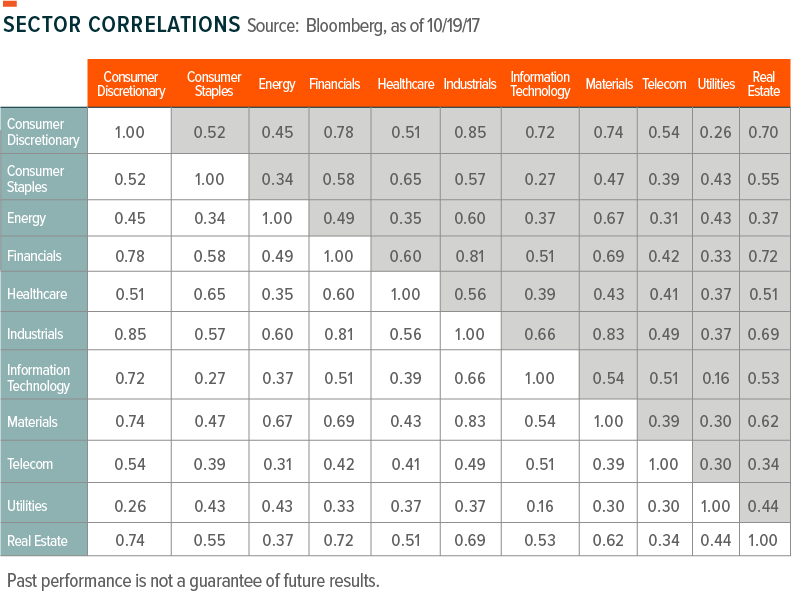I’ve always found sector investing fascinating. There’s an excitement that comes with mixing and matching sectors by way of their various correlations.
Sector diversification, including through sector ETFs, can be an effective a strategy for changing market conditions. It can also help reduce sector concentration risks associated with certain high yield strategies. The reason is twofold. First, sectors may not move together in price. And second, they can have low correlations. In fact, some sectors have a long history of different performance patterns.
In the US, typically, economic, regulatory, legislative, and political events have had similar effects on the underlying stocks in a portfolio. As a result, history shows their prices tend to move together. Even across sectors many stocks are related, so certain sectors tend to be highly correlated. For example, Financials and Consumer Discretionary stocks depend on credit markets and interest rates. Energy and Materials stocks often benefit during economic upswings, as they provide necessary raw inputs to many other industries.
Where it gets interesting is when sectors that are not correlated are combined. Here lies the real potential advantage to sector investing. Generally, the varied nature of the businesses of the constituent industries means low price correlations over time. For example, adding the traditionally defensive characteristics of Utilities stocks to a portfolio of technology-related growth stocks should help manage portfolio risk in many different market environments. Should the situation dictate, incorporating additional sectors to the mix could compound the diversification benefits as well.
Of course, investors should be aware that all sectors might sustain losses and move in tandem to the downside during periods of market disruption.
S&P 500 Sector Correlation Matrix (1996-2017)

Related Funds
Given thematic investing’s agnostic approach to geographies and sectors; it can have low correlations to other portfolio strategies, which can be particularly useful for investment managers seeking to diversify sources of growth.
 Global X ETF Model Portfolio Team
Global X ETF Model Portfolio Team